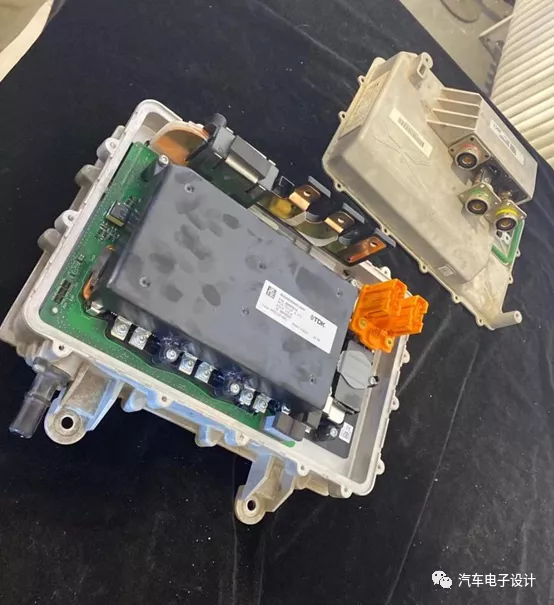Introduction
Today there was a recall incident where XPeng Motors recalled a total of 13,399 XPeng G3 vehicles produced from March 29, 2019 to September 27, 2020. As of today, several leading new car companies have issued recalls. NIO and WM Motor for battery systems, and Ideal for chassis. This time, XPeng had a recall for inverters. Let’s take a closer look at what happened.
Where is the problem?
Problem location: tin whiskers
XPeng’s official statement this time is:
“Due to tin whiskers on the tin-plated terminals of the DC bus capacitor screws of the inverter, a short circuit may occur between the positive and negative high-voltage direct current, resulting in no high-voltage power supply to the inverter.”
When this happens, if the vehicle is in a parked state, it may not start again. If the vehicle is in a driving state, it may cause the vehicle to lose power, which poses a safety hazard.
XPeng G3 has carried out a 150,000 km teardown activity. So we can see the photo of this inverter below, with two pictures showing the structure from top to bottom and bottom to top respectively.


In fact, this issue is similar to the case of the Polestar 2. The problem with this car is the same. Recall of 551 first-edition pure electric vehicles produced from September 12, 2019 to August 22, 2020.
In vehicles within the scope of this recall, the tin whiskers on the tin-plated terminals of the high-capacity capacitors connected to the screw of the inverter on the front and rear axles can cause a short circuit between the positive and negative high-voltage direct current, resulting in a lack of high-voltage power supply to the front and rear axle inverters.
When this happens, if the vehicle is in a parked state, it may not start again. If the vehicle is in a driving state, it may cause the vehicle to lose power, which poses a safety hazard.
Metal whiskers
The problem of metal whiskers can be traced back to 1945 when the US telephone line system experienced a failure (internal short circuit of the battery) and it was found that it was caused by the metal whiskers on both sides of the Sn electrode plate.
In the above problems, due to the possibility of electric discharge between Sn whiskers and adjacent high-voltage conductors, the short-circuit problem will worsen, causing serious damage.
Whisker growth is essentially a spontaneous surface growth phenomenon that is not limited by conditions such as electric field, humidity, and air pressure.
In the above failures, there are two modes, static and driving (vibration causes the whiskers to move position), and this problem is actually very difficult to investigate.
Note: whiskers can generate stable and persistent short circuits on adjacent surfaces of different potentials, and can also cause instantaneous short circuits by melting when the current is high enough to exceed the melting current of the whiskers. In a vibration environment, whiskers will fall off, causing the above circuit short circuit.
I tend to think that this problem started with the pole star, gradually moving from Tier1 suppliers to film capacitor suppliers, and was discovered in similar applications. And this problem is more likely to occur after a period of use.
The Difficulty of Making the Distribution System
Actually, it is difficult to make a high-voltage protection system, because the most difficult thing in the car is the failure to turn on the power, pre-charge failure, and related issues, such as contactor adhesion.
In fact, the entire distribution system, as shown in the figure below, is essentially for protection, but if such a problem occurs in any of the back-end high-voltage components, it is to a certain extent damage to the contactors and fuses.
If the above problems occur without obvious signs, it is necessary to maintain the electrical system in the battery pack and accumulate to a certain degree before the problem can be solved nearby.

Summary: Every time I see this after-sales problem, I still need to investigate the problem from the overall part. When the high-voltage distribution system goes towards the low-cost direction, the overall high-voltage safety mechanism still needs to be ensured. Under the overall cost reduction logic, how to plan the technology and cost paths of each component in the protection system, and design each failure mode and safety mechanism correspondingly, is very important. In fact, the hardest part is answering the question of why it cannot be cheaper.
This article is a translation by ChatGPT of a Chinese report from 42HOW. If you have any questions about it, please email bd@42how.com.
